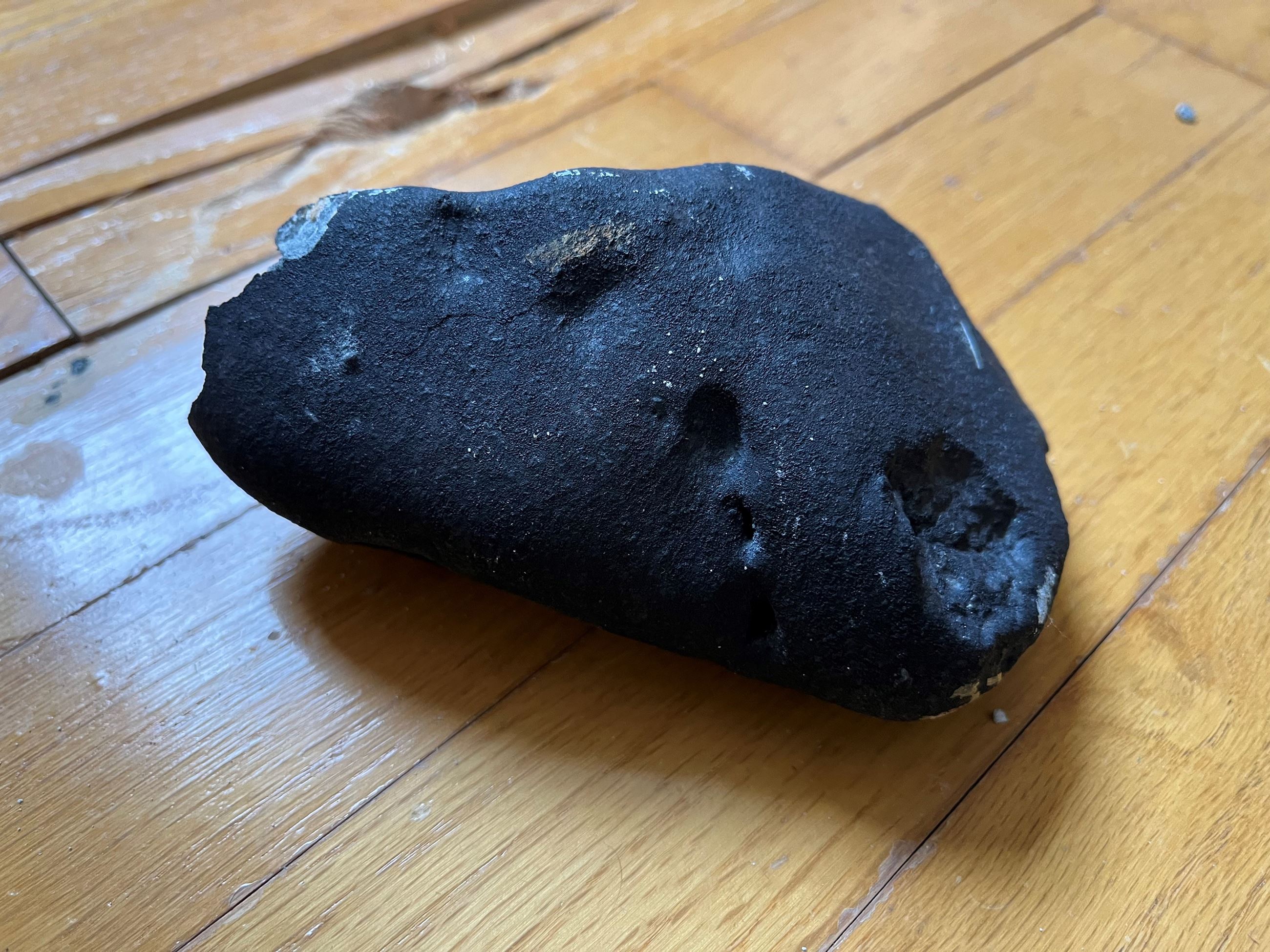'Meteorite' that struck French woman was just a regular Earth rock, experts say
'The pictures CLEARLY show this is NOT a meteorite!'

In a story that's beginning to go viral, a French woman describes how she was injured when she was struck by a rock from space. But experts suggest all is not what it seems with this meteorite tale.
The woman, a resident of Schirmeck in the French department of Bas-Rhin, said that she was sitting on her terrace at around 4 a.m. local time on July 6 when she heard a shock on the roof. A pebble then fell off the roof and hit her at rib level.
"I heard a big 'poom' coming from the roof next to us. In the second that followed, I felt a shock in the ribs. I thought it was an animal, a bat," the woman told the French newspaper Les Dernières Nouvelles d’Alsace (DNA). "We thought it was a piece of cement, the one we apply to the ridge tiles, but it didn’t have the color."
The paper showed an image of the suspected space rock (embedded below), which is black and has sharp edges. But it is in these images that the first cracks in the meteorite explanation appear. Observatoire de Paris astronomer Jeremie Vaubaillon explained that the rock pictured is definitely not from outer space.
"The pictures CLEARLY show this is NOT a meteorite! These rocks have way too many angles to be meteorites. Remember that during its flight in the atmosphere, the initial rock melts because of the surrounding super-hot plasma," Vaubaillon told Space.com via email. "Picture an ice cube melting: There is quickly no angular pieces left. Well, the same is happening for a meteorite as it passes through the atmosphere."
Related: Meteorite found! Space rock from brilliant fireball over Europe located in France
Vallée de la Bruche : une météorite percute une habitante de Schirmeck 🔽https://t.co/G1MBLAZU4PJuly 13, 2023
The rock also has a "bubbled" and irregular surface. This feature is common with volcanic rocks: bubbles of lava are frozen in as the molten rock quickly cools. Space rocks that pass through Earth's atmosphere, on the other hand, tend to have smooth surfaces due to the heat they experience and the melting it causes, as Vaubaillon noted.
Breaking space news, the latest updates on rocket launches, skywatching events and more!
Few people doubt that something struck the French woman on July 6. But Vaubaillon isn’t the only expert expressing skepticism about the offending rock supposedly coming from space.
François Colas, an astronomer with the Fireball Recovery and InterPlanetary Observation Network (FRIPON) sky surveillance network, explained to the French astronomy publication Ciel & Espace that, when a meteorite falls from the sky, it tends to arrive at the surface at approximately 186 mph (300 kph). So, if the July 6 rock were a meteorite, it should have damaged the roof when it hit. But that didn't happen here, Colas said.
Additionally, FRIPON monitors the sky over France for flashes of light caused by meteors, but none were detected in the area on July 6. If this was a space rock, the object was also missed by other skywatchers.
"Such an object reaches magnitude -15 [with the minus prefix indicating a particularly bright object over Earth]; it does not go unnoticed. In this season, there are also many amateur astronomers who observe; they would have reported such an event," Colas explained.
The odds don't favor an extraterrestrial origin for the rock, either. Vaubaillon explained how incredibly unlikely it would be to be hit by a meteorite falling to Earth.
"Meteorite falls are rare; most of the meteorite material is melted during the atmospheric entry," the astronomer said. "In order to survive the entry and make it to the ground, the rock has to be both slow and large, above 1.6 feet [0.5 meters] in diameter, and large objects are rare."
In addition, Earth is an extremely big target for space rocks, and around 71% of its surface is ocean.
"The surface of the Earth is very wide compared to the size of a human," Vaubaillon said. "Two-thirds of meteorite falls end up in the ocean, and most of the remaining ones end up in fields, forests, deserts, etc."
Vaubaillon calculates that the chances of a person being hit by a meteorite are about 1 in 100 trillion. And that tiny probability should be quite a relief. The astronomer also explained what it would be like to be directly struck by a meteorite.
"It would hurt!" he said. "It depends on the rock size, but they fall from high altitude, and their speed stabilizes at around 190 miles per hour. Imagine you are hit by a rock while driving at such speed. This would hurt you a lot."

Robert Lea is a science journalist in the U.K. whose articles have been published in Physics World, New Scientist, Astronomy Magazine, All About Space, Newsweek and ZME Science. He also writes about science communication for Elsevier and the European Journal of Physics. Rob holds a bachelor of science degree in physics and astronomy from the U.K.’s Open University. Follow him on Twitter @sciencef1rst.

